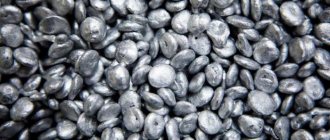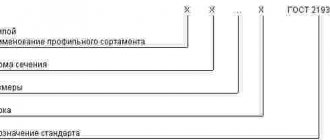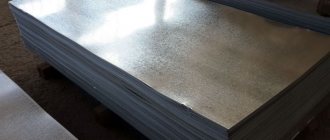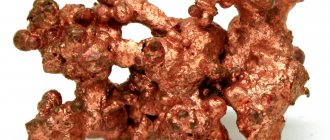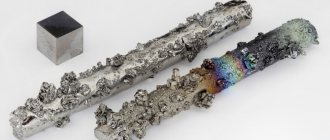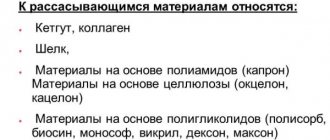Tape, strip and strip are types of metal products that are united only by an elongated shape. In all other characteristics and areas of application, they differ. These products cannot replace each other.
However, for people not familiar with the intricacies of rolled metal production, the difference between strip, tape and strip may not always be obvious. What do these products have in common and how do they differ, we will tell you further. Knowing some of the subtleties will help you avoid getting confused when purchasing rolled metal.
Areas of use
A strip is a cold-rolled steel strip, the width and thickness of which can vary over a very wide range. The varieties of such tape can be different: there is a galvanized version, there are varieties with a polymer coating, and special-purpose products are also available, developed and manufactured to perform special specialized tasks.
The most widespread are metal products, which are most often used for the following purposes:
- production of straight-seam and wound pipeline structures;
- as irreplaceable elements when installing ventilation equipment, air conditioners, split systems;
- as an indispensable part in the construction of gutters, roofing structures, gutters, and plasterboard guides.
In addition, this type of tape is well known to anyone who has at least once been involved in repairs, wholesale purchases of products or goods packaged in boxes or briquettes. It is those very “straps” that have to be cut to access the contents that bear this name.
Definition and scope of application of strips
A strip is a thin strip up to 4 mm thick, made of steel with a protective anti-corrosion coating, which has high performance characteristics.
The word “strip” itself comes from the English word “strip”. This is an environmentally friendly material used in many fields of activity, such as:
- metallurgy (pipe production);
- construction, finishing and repair work (fastening structures, laying communications, as guides, for fencing, as decorative elements);
- production of parts (household appliances, machine tools, various equipment and devices, angles, channels, springs);
- production of furniture and plastic windows;
- packaging of goods for subsequent transportation.
Types and materials of manufacture
The classic strip is a thin strip of galvanized steel with a thickness of 0.3 to 3 mm. Its width can range from 0.2 to 3 cm. Such tape is usually supplied in special roll containers. Depending on the design of the bay and its size, the length of the tape can reach one and a half kilometers. True, the weight of this type of equipment can reach values in excess of 7 tons.
Strip tapes are most widely used in the construction industry. With their help, the necessary functionality and consumer qualities are imparted to the following designs and materials:
- perforated plates, brackets and other parts of complex geometric shapes;
- basis for fastening guides used in the construction of partitions or ceilings made of plasterboard, plastic or other relatively lightweight building materials.
In these areas, galvanized steel strip is usually used. But there are other varieties of this specific material.
Is a strip a hard metal or a pliable strip?
Many people ask the question, what is strip? What is it made of and for what purposes is it used? All these issues will be discussed below.
1 Meet this strip
Everyone knows the English word strip, which means “tape”; this is where the term strip, which got its name because of its appearance, takes its roots. Thus, it is a metal strip, the thickness of which does not exceed four millimeters, and plays the role of an auxiliary structural material. This product has also found wide application for the production of various products.
Packing and fastening
In addition to purely “power” and load-bearing loads, strip tape is capable of performing many applied tasks. With its help, for example, you can securely fasten various structures and even structures. Of course, with the appropriate thickness and width parameters.
In addition, they are widely used in the packaging of a wide variety of parts, goods and products. A flexible and durable plate not only prevents a box , plastic container, or any other type of container from deforming, but also acts as a kind of sling that allows you to move cargo more quickly.
Advantages of stainless steel strips
Advantages of using tapes made of stainless steel:
- resistance to aggressive environments;
- light weight. Achieved through the use of thin-sheet material in manufacturing;
- the ability to create sheet bodies of different configurations;
- flexibility and strength;
- excellent wear resistance.
In addition, such products do not damage the surfaces that they fix.
Stainless steel strips are used in various fields and industries: the production of metal profiles, welded pipes, drainage systems and other structures of this type. It is also used for packaging goods that need to be protected from the negative influence of external factors.
Applications
Strip tape also finds its application in household use, fulfilling a role that was not originally intended for it. It is used with pleasure, for example, by summer residents. And for a wide variety of purposes:
- strengthening fences and fences;
- flooring and fixing of roofing coverings;
- decorative design of the surrounding area.
Such high functionality and diversity of applications is explained by the consumer properties of strip-type tape.
As mentioned above, strip tape, depending on the tasks assigned to it, can be steel, galvanized, made of plastic or some composite materials. In addition, a variety of spraying can be applied to the surface of the canvas, starting with ordinary paint and ending with various powder or composite suspensions. It is quite obvious that the method of surface treatment affects not only the functionality of the product, but also its cost. In any case, strip tape is distinguished by its high strength, durability and versatility.
Galvanized strips can truly last 50 years or more , especially if they are not subjected to shock, mechanical stress and stretching. A simple stainless steel strip is somewhat inferior to its zinc “brother” in terms of effective service life, but it is noticeably better in terms of cost. As for plastic, polymer and composite materials, in the hands of a good, diligent owner, they can serve him well for many, many decades.
Production method
In addition to the shape, strip, strip and tape have the same manufacturing method. Product production consists of the following steps:
- Processing of workpieces. Rolled metal is hardened, degreased and pressed to give the characteristics necessary for production. As a result of hardening, the strength and wear resistance of the future product increases. Degreasing is necessary for possible painting in order to increase the adhesion of the dye. Crimping allows you to give the workpiece its final shape.
- Galvanizing. The metal is coated with zinc if products made from it are planned to be used in conditions of increased risk of corrosion. This treatment prevents oxidation and significantly extends the service life of the product.
- Winding up blanks. Treated metal sheets are wound into rolls (coils). They are then taken to the cutting site.
- Unwinding blanks. The web is placed on an unwinder, which automatically straightens it. Afterwards, the workpiece enters the cutting zone.
- Cutting. First, the metal sheet is cut longitudinally into strips of the required thickness. The guillotine then cuts them crosswise to the required length.
- Winding up the final product. The resulting metal lines are twisted into new rolls using the device. The strip remains straight due to its large thickness.
This technology allows you to cut the right amount of rolled metal to the required length and width every time. Therefore, it is not difficult for manufacturers to adapt to customer needs.
This is how the strip is rolled into rolls after cutting.
Galvanized strip
Do you need galvanized steel tape for production? Don't have the equipment to cut rolls yourself? Contact our company. We will provide you with strip tape of the required width, length and in any volume.
Strip is rolled metal cut into coils of a certain width. We sell only galvanized strip tape. The word "strip" is of English origin. It is translated into Russian as “tape”. To obtain rolled products of various thicknesses, they are cut into longitudinal strips. In many cases, the use of strips allows you to reduce material consumption, and therefore production costs. In particular, this applies to the production of metal sleeves, pipes, hoses, and wiring boxes.
You can order the following types of strip tape from us:
- without protective coating;
- made of galvanized steel;
- with additional polymer coating;
- made of stainless steel.
Galvanized strip with and without coating
offers to buy metal strips of various lengths and widths at a reasonable price. They are used in the design of facades, in the production of small architectural forms and fences. The parameters of the strips (length, width, thickness) are determined by the needs of the customer and the capabilities of rolled metal.
Metal strips are often used to create corners and bent products. Accordingly, the source material must be strong, but flexible and ductile. As practice shows, the best raw material for such work is metal with a carbon content of no more than 0.25%.
High carbon steels are harder. They don't bend well. The best purpose for high-alloy metals is the manufacture of knives for guillotines and agricultural harvesters.
In addition to the carbon content, when choosing steel for cutting metal into strips, it is important to consider the content of other additives. Their total should be no more than 2.5%. Metal with minimal inclusion of additional chemical elements is characterized by greater viscosity and ductility. Such steels are classified as low-alloy steels. Metallurgical plants use copper, titanium, nickel, chromium, etc. as additives.
Polymer-coated strip is used for the manufacture of:
- guides for plasterboard structures, suspended ceilings, siding, ventilated facades;
- additional elements of roofing and drainage systems, gutters, ridges, brackets;
- round or rectangular pipes;
- chimneys and air ducts;
- furniture, household appliances, medical equipment;
- light steel thin-walled structures;
- metal hoses, electrical boxes for cable laying.
Metal packaging tape is indispensable for transporting and storing bulky, heavy cargo, for example, machine tools, lumber, logs, rolled products in rolls and bundles. It is also used in construction, for laying foundations and load-bearing structures.
PARAMETERS OF GALVANIZED STEEL TAPE FROM THE FACTORY:
- Roll width - from 600 mm to 1500 mm.
- Metal thickness - from 0.3 mm to 3.0 mm.
- The number of incisors is no more than 21 pcs.
- Minimum width - 59 mm.
- The maximum roll weight is 5 tons (the maximum length depends on the thickness, for example: 0.5 mm - 900 meters, and 1.0 mm - 450 meters, so we give the weight of the roll, not the length).
Our metal strip accepts applications for cutting rolled metal into strips of the required width. In the bay - from 25 meters or more. This is convenient, for example, when manufacturing seam roofing elements directly on the construction site. A crane or other special equipment is not required to lift workpieces onto the roof.
The maximum length of galvanized or other types of strip is determined by the thickness of the rolled metal used. If you choose 0.5 mm steel, you can cut strips up to 900 m long. If the steel thickness is increased to 1 mm, the length of the strip tape in the coil will decrease to 450 m. Considering this fact, our company indicates in the documents not the length, but the weight stripes
Features of manufacturing galvanized steel strip
The process of cutting rolls into strips is quite simple. Without going into technical details, there are 3 main stages:
- The metal roll is installed on the unwinding device.
- The metal is fed onto special rollers and dissolved into strips.
- Finished metal strips are wound into coils.
has a unique LSK-Machine, which allows for longitudinal and transverse cutting of flat products. The accuracy is controlled by a special electronic winder. The absence of burrs, creases, and jams on the edge and the entire strip is guaranteed. Winding is performed perfectly evenly and accurately.
When producing simple strips, our company takes into account the provisions of GOST 14918-80 and GOST 52246-2004. If metal packaging tape with a polymer coating is required, the work is carried out in accordance with GOST 52146-2003. Customers can choose the color to be applied to metal from the RAL palette.
Do you have any questions regarding product parameters or shipping times? Our managers are ready to answer them both on the website and by phone.
Sale of strips from the MetalGroup company
From us you can buy strips for any purpose at an inexpensive and excellent quality. We also sell strips made of stainless steel and used non-ferrous metals. Please note that it is more profitable to purchase used products - the price for such strips will be noticeably cheaper.
You are offered not only the sale of strips in, but also processing of its edges, cutting to specified sizes, straightening, bending, applying zinc coating, manufacturing metal structures of any complexity according to your specifications.
Discount on order amount: 1%
from 10,000 rub.
2%
from 50,000 rub.
3%
from 100,000 rub.
